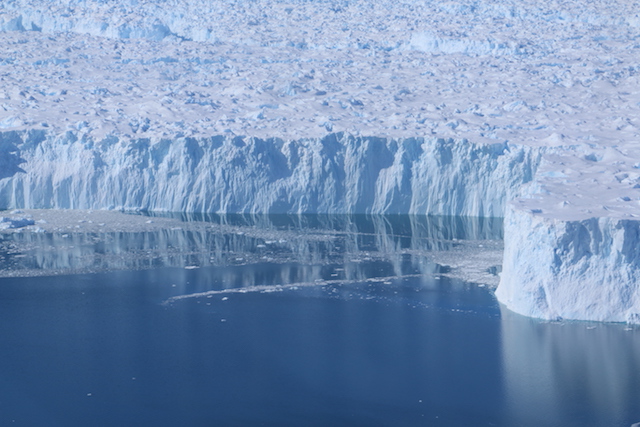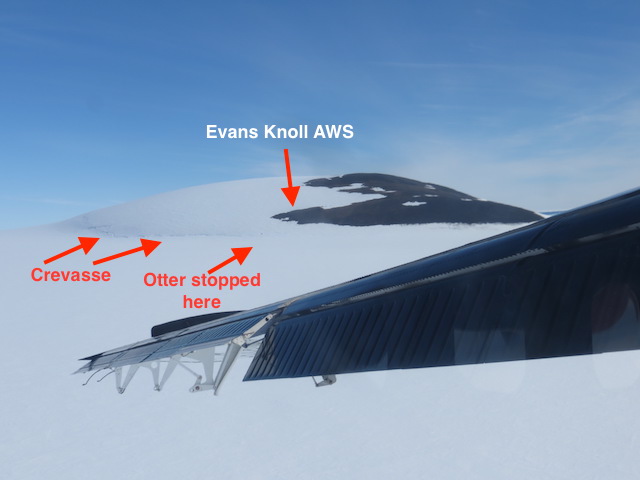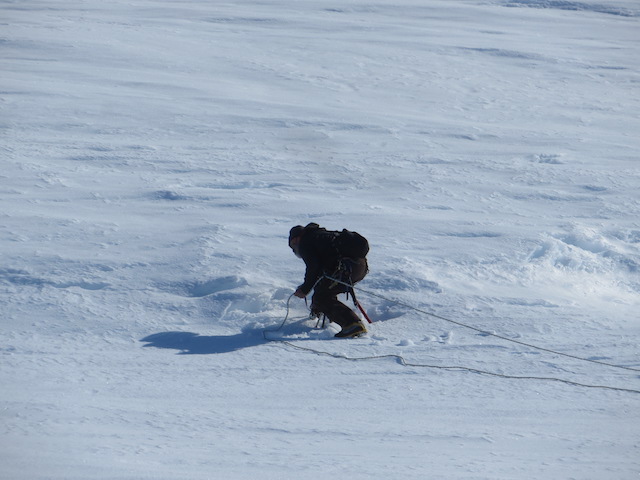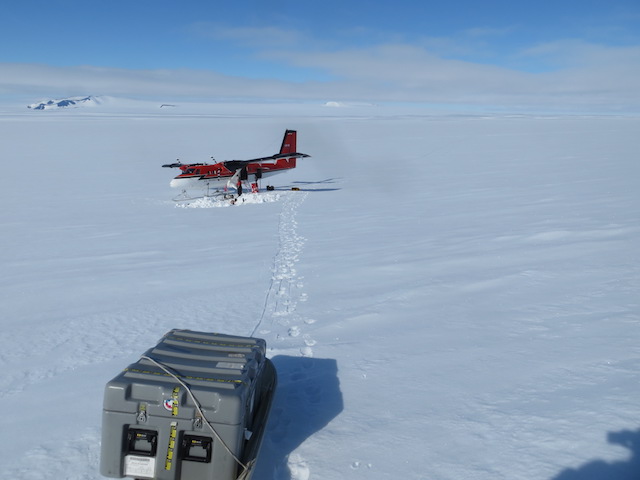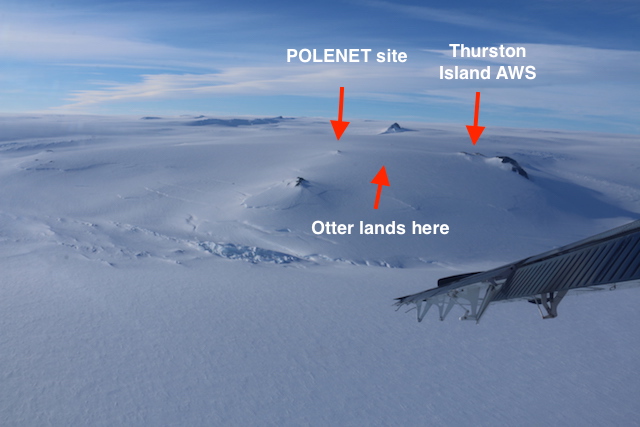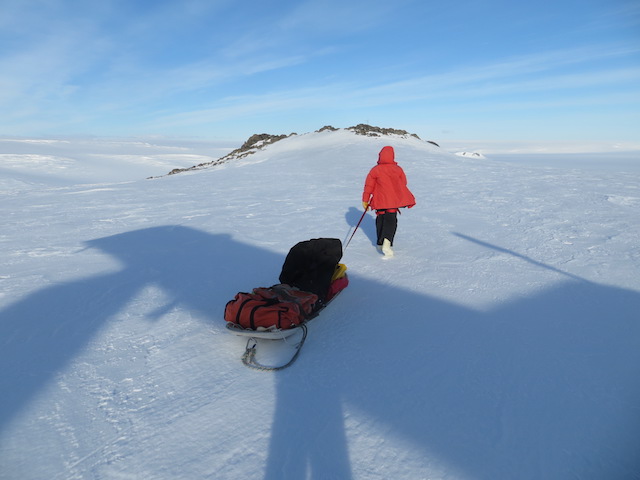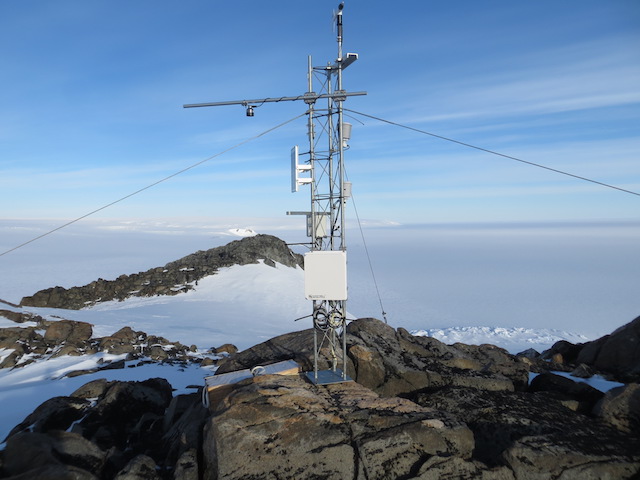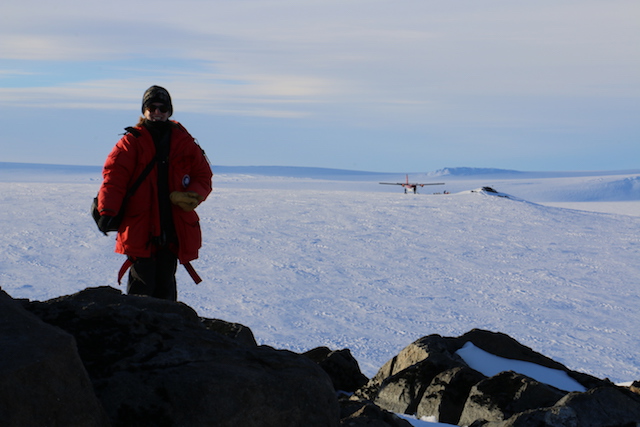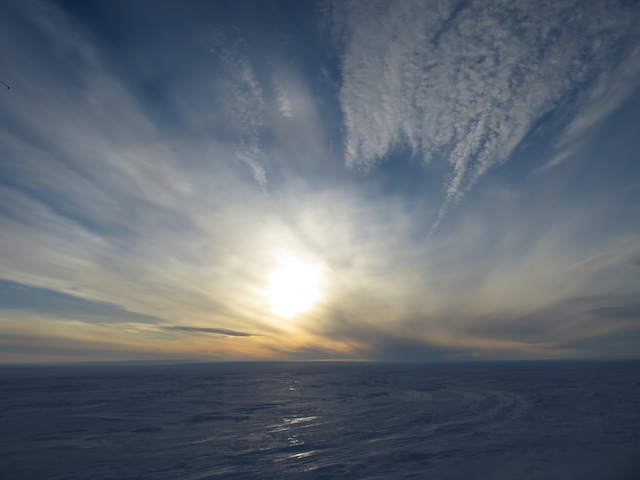We thought that we weren’t going to have enough time to do both Evans Knoll and Thurston Island in one day, as it takes 2 hours to fly to Evans Knoll from WAIS and then another hour on top of that to get to Thurston Island. Six hours of flying really cuts into our ground time. To boot, we needed to remove Evans Knoll by traversing across a crevasse and up a hill, which is no trivial task. But if the pilots are willing to fly to both sites in one day, we’re willing to try finishing our work.
Joining us on this venture were Mark Whetu, a mountaineer, and Andrew Lloyd, a scientist for POLENET. Mark is the expert in all things crevasse-related, so he came along to make sure we could safely cross the crevasse at Evans Knoll and hike up the hill to the site. Andrew came both as an extra hand and to service POLENET’s site at Thurston Island, which is near our AWS site.

Preflight. Elina on the left, Mark on the far right and Andrew next to Mark. The others pictured helped us bring gear to the plane and send us off from camp.
On the way to Evans Knoll, we flew over Pine Island Bay where Pine Island Glacier meets the sea. There are many large icebergs in this area. It’s quite a sight, especially in contrast to the flat white scenery of WAIS.
I don’t think we could have picked a better day, weather-wise, to remove Evans Knoll. Light winds, “warm” temperatures around 27 F (~-3 C), and mostly clear skies.
After we landed at the base of the hill, Mark walked up to assess the crevasse as Elina, Andrew, and I organized our gear at the plane. Mark roped up and attached to a snow anchor below the crevasse before approaching the crevasse and probing the surface. He found a spot that was safe to cross, filled in the crack a bit with some snow to help solidify a “snow bridge”, then made a rope line that bridged the crevasse. As he hiked up the hill, he made several rope lines, all attached to anchors in the snow, that we would attach ourselves to as we ascended and descended the hill. This way, we would always be attached to a rope that would limit our fall and facilitate rescue if we were to fall into a crevasse.

Mark above the crevasse, anchoring the rope to the snow. The first anchor is on the right, next to the bag. The AWS can be seen on top.
Once Mark got the first two rope lines established, we started hauling our gear up the hill.
It took us about an hour and 15 minutes to hike up the hill and reach the site. Once we did, Troy (Twin Otter captain) yelled up to us that if we wanted to go to Thurston Island, we had 1 hour to do our work here at Evans Knoll. We said “OK, you got it, Troy!” and got to work.
It was a lot of fun as we frantically removed the instruments from the tower, loosened the guy wires, and removed the tower from the base plate. We all worked together and did our best to complete the removal as quickly as possible. One unforeseen hiccup was that the 2 battery boxes were frozen to rock at the base of the station, so that took quite a bit of time to chip them free. But we did!

Evans Knoll is gone. It took a few trips to bring the gear back down the hill, and the rest of the gear is packed up on the banana sled here.
We finished our work in enough time to go to Thurston Island! Our goal was to install a new Taylor high wind system on our AWS, as it gets very windy there and has consistently broken our wind monitors.
It was partly cloudy at Thurston Island but windier than Evans Knoll. It was interesting to note, too, how much windier it was at the AWS itself than where we landed. Once we did land, of course, we had to haul our equipment to the AWS from the plane. Naturally, we used a banana sled again.

Thurston Island after we finished our work. The Taylor high wind system is installed on the top of the tower.
The lighting during our visit was beautiful. It was late in the day, and since we were further North than WAIS, the sun was lower in the sky. This gave everything a nice hue towards the end of our visit. It was the closest to a sunset we’ve come in a long time!
After a successful site visit for both us and Andrew, we headed back to WAIS. We needed to stop at the Turn 1 fuel cache, though, so we didn’t get back to camp until 9:30 pm. A long day, but a very productive and satisfying one! We saw some cool crevasses on the way back, too.
Cheers! -Dave



